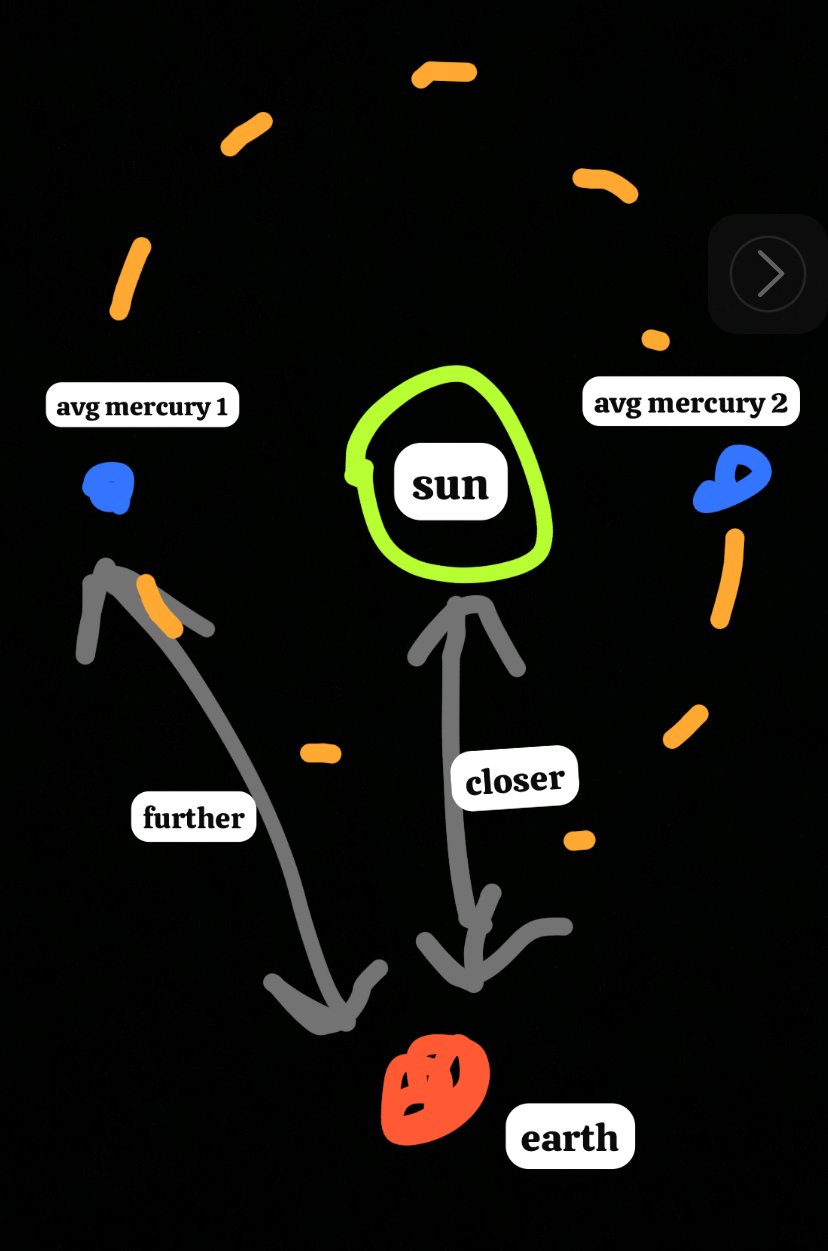https://youtu.be/SumDHcnCRuU?si=m754GmauMaaimoRw
CGP Grey on that subject <3
This is awesome and 🤯 at the same time.
Right because it goes round so fast. I feel like this is somehow misleading tho, to be real
Sort of, basically because mercury has the small orbit it spends the most time closer on average to any other planet. The CGP Grey video someone else posted is a really good explanation as to what’s going on.
I mean, I think you basically cut the explanation to a single sentence.
Excellent work optimising efficiency in the pipeline srgnt 🫡
Carry on soldier 🫡
Thanks! I still def recommend checking out the video. It’s a really fascinating topic.
I’d already saved it to my watch list. It sounded really interesting, I’ll get around to it eventually 👍
I don’t think it’s misleading. I think a lot of people who think of Mars as the closest don’t realize that it’s only close once every 2 years or so and unimaginably far away on average (further than Mercury).
when it is the furthest from earth, it is the least further
He doesn’t go far, that mercury fella
He doesn’t go too far enough! 😆
Neither too far nor too near
The least wiggle
What about if you add the sun into the equation?
If you take the sun out of the equation, the planets fly apart in all directions. Hope that helps ;)
I mean would the planets be closer to mercury or the sun on average
By the reasoning given for why Mercury is the closest for each planet, the Sun is the closest object for each planet, on average, excluding satellites of the planets.
I would agree but unsure because there are the intricacies of orbit cycles and timings and the 3d plane of space
I mean, the Solar System isn’t all that 3D. Inside of the Oort Cloud, almost every notable object is on or close to the ecliptic
I am not a scientist, or mathematician, or STEM in any way, but if we assume that mercury has a circular orbit, and the sun has a stationary position within everyone’s orbit… and that every planet has a circular orbit, instead of elliptical, then we can assume… that the sun and mercury (edit: or ANY planet) are equal, since mercury is half of the time further and half of the time closer.
I hope that helps. I know the first rule of the internet is that stating something wrong will immediately result in being corrected by a SME, so either way my comment will get you* the correct answer.
Edit: this reasoning would only apply to planets that have circular orbits and are on the same plane.
Thanks for the attempt but your calculation is wrong, as it considers distance only on a one axis and not a two axis plane. With your circle assumption, mercury would be further than the sun on average.
I wonder if anyone has the data without the circle assumption, and also correcting for the various other complexities.
Thanks, you fell into the trap. But, how would Mercury be further on average if we assumed circular orbits and the planets were on the same plane?
hope my shitty drawing helps
(replying from my alt)

Your bar napkin math has convinced me.
Edit: original commenter, here is your answer.
I don’t think that would help, I quite like our relative location.




